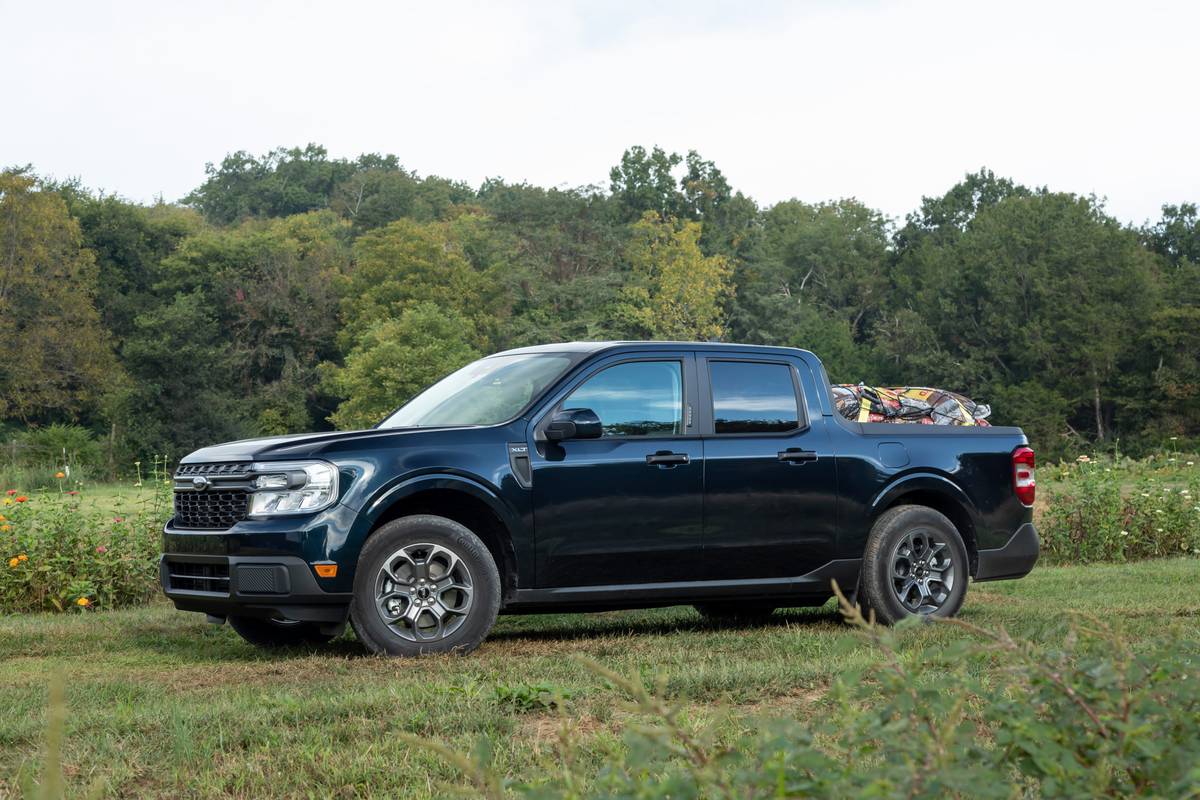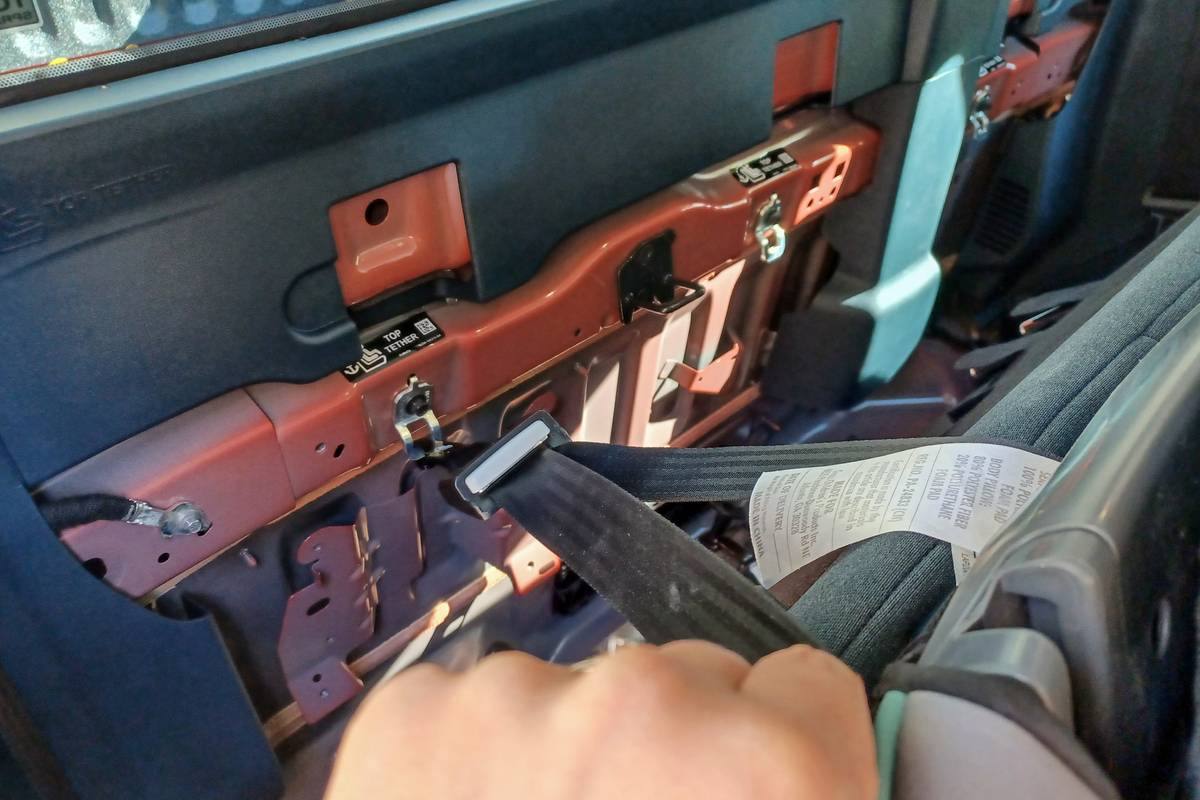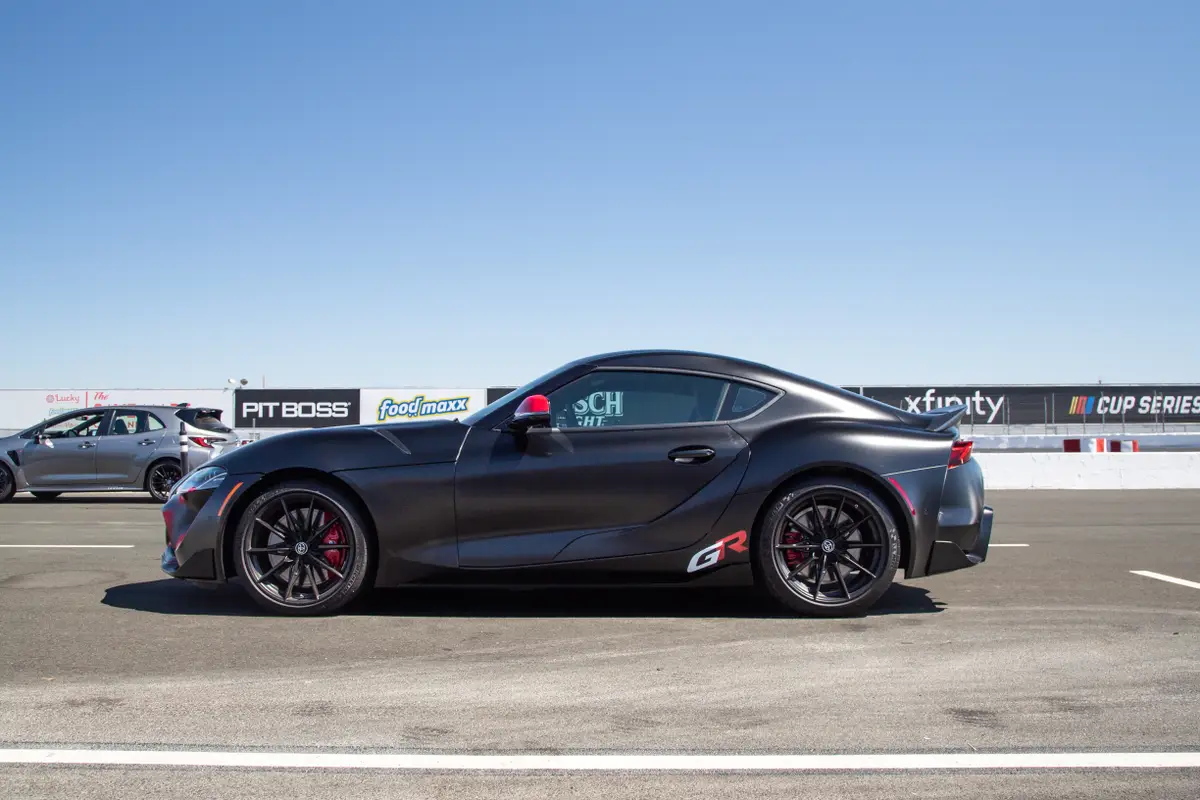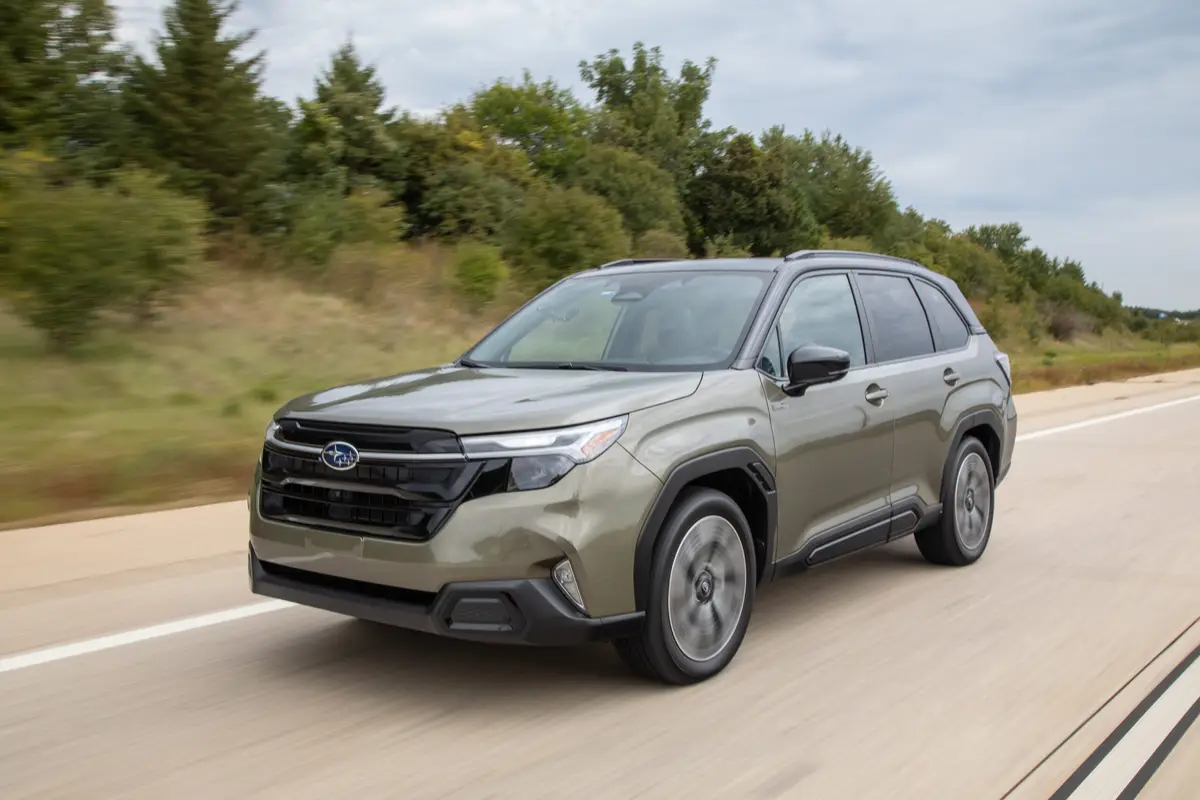How Do Car Seats Fit in a 2022 Ford Maverick?


The verdict: Ford unveiled the Maverick compact pickup truck for 2022, and although it might be right-sized for small jobs, it’s wrong-sized for car seats. A lack of rear legroom and complicated top tether anchors prevented the Maverick from doing well in Cars.com’s Car Seat Check.
Does it fit three car seats? No.
Take a look at how the Latch system and each car seat scored below in our Car Seat Check of the 2022 Ford Maverick.
Related: Search Car Seat Checks

A Grade
- Latch: The two sets of lower anchors are easily accessible; they sit just within the seat bight, with small cutouts in the upholstery to facilitate access. Three top tether anchors sit behind the rear seat. The backseat folds in one piece, and it must be folded down to access the anchors, complicating connection. We gave the lower anchors an A grade, but the forward-facing convertible earned a D grade because it’s the only car seat that uses the top tether anchor.
B Grade
- Booster: After removing the head restraint, the seat fit well. The Maverick’s floppy buckles could make it tough for a kid to buckle up independently. There’s also not a lot of legroom in back.
C Grade
- None

D Grade
- Rear-facing convertible: Latch connection was easy, but front-passenger legroom was a problem. With the seat installed behind them, our 5-foot-6 front passenger’s knees were slammed against the glove box.
- Infant seat: Again, lower latch connection was great, but we had the same legroom issues as we did with the rear-facing convertible.
- Forward-facing convertible: We had no issues with the lower latch anchors but struggled quite a bit with the top tether anchor. Accessing it was very difficult. After removing the head restraint, we folded the seatback down to reveal the anchor, which Ford mounts midway down the panel behind the seat. Folding the seat was awkward since the convertible was sitting on it. We connected the tether strap to the anchor and then tried to tighten it while pushing the seat back to its upright position — also an awkward procedure. The tether strap’s tightening mechanism also interferes with efforts to fold the seat back into an upright position unless you slot the tightening mechanism into a very specific notch above the anchor. It’s also very difficult to tighten the strap; we had to continually fold the seat up and down to tighten the strap and remove any slack, and we weren’t able to get it very tight after multiple attempts. In the end, it was tight enough to decently restrict the upper section of the car seat in a crash, though not as cinched as we normally like.
Grading Scale
A: Plenty of room for the car seat and the child; doesn’t impact driver or front-passenger legroom. Easy to find and connect to Latch and tether anchors. No fit issues involving head restraint or seat contouring. Easy access to the third row.
B: One room, fit or connection issue. Some problems accessing the third row when available.
C: Marginal room plus one fit or connection issue. Difficult to access the third row when available.
D: Insufficient room, plus multiple fit or connection issues.
F: Does not fit or is unsafe.
About Cars.com’s Car Seat Checks
Editors Jennifer Geiger and Jennifer Newman are certified child safety seat installation technicians.
For the Car Seat Check, we use a Chicco KeyFit 30 infant-safety seat, a Graco Contender 65 convertible seat and Graco TurboBooster seat. The front seats are adjusted for a 6-foot driver and a shorter passenger. The three child seats are installed in the second row. The booster seat sits behind the driver’s seat, and the infant and convertible seats are installed behind the front passenger seat.
We also install the forward-facing convertible in the second row’s middle seat with the booster and infant seat in the outboard seats to see if three car seats will fit; a child sitting in the booster seat must be able to reach the seat belt buckle. If there’s a third row, we install the booster seat and a forward-facing convertible. Learn more about how we conduct our Car Seat Checks.
Parents should also remember that they can use the Latch system or a seat belt to install a car seat, and that Latch anchors have a weight limit of 65 pounds, including the weight of the child and the weight of the seat itself.
Cars.com’s Editorial department is your source for automotive news and reviews. In line with Cars.com’s long-standing ethics policy, editors and reviewers don’t accept gifts or free trips from automakers. The Editorial department is independent of Cars.com’s advertising, sales and sponsored content departments.

News Editor Jennifer Geiger joined the automotive industry in 2003, much to the delight of her Corvette-obsessed dad. Jennifer is an expert reviewer, certified car-seat technician and mom of three. She wears a lot of hats — many of them while driving a minivan.
Featured stories




